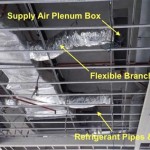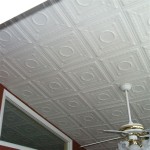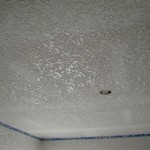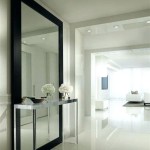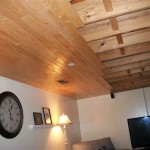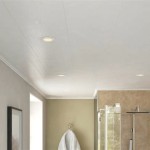What Material Is False Ceiling Made Of?
A false ceiling, also known as a drop ceiling or suspended ceiling, is a secondary ceiling installed below the main structural ceiling. It serves various purposes, including hiding unsightly elements like pipes and wiring, improving aesthetics, enhancing acoustics, and adding insulation to the space. The choice of material for a false ceiling depends largely on the intended use, budget, and design preferences. This article will delve into the different materials commonly employed for false ceilings.
Gypsum Boards
Gypsum boards, often referred to as drywall, are one of the most popular materials used in false ceilings. They are readily available, cost-effective, and easy to install. Gypsum boards are made from a core of gypsum plaster encased in paper or fiberglass. Their smooth surface provides a blank canvas for painting or wallpapering, offering versatility in terms of design and decoration. However, they are susceptible to water damage, making them unsuitable for areas prone to moisture.
Gypsum boards are typically used in residential and commercial settings, where they provide a clean and professional finish. They can be used to create various ceiling designs, including flat, curved, and multi-level ceilings. Gypsum boards are also available in different thicknesses, allowing for the creation of recessed lighting or other design features.
Mineral Fiber Tiles
Mineral fiber tiles are another common material for false ceilings. They are made from mineral fibers, such as gypsum, glass fibers, and cellulose, bonded together with a binder. Mineral fiber tiles are lightweight, durable, and fire-resistant, making them suitable for various applications, including offices, classrooms, and hospitals. They also offer excellent sound absorption properties, contributing to a quieter and more comfortable environment.
Mineral fiber tiles come in a variety of sizes, colors, and finishes, providing flexibility in design. They are typically installed in a grid system, allowing for easy access to the space above the ceiling for maintenance or repairs. Mineral fiber tiles are also relatively inexpensive, making them a budget-friendly option for false ceilings.
Metal Panels
Metal panels, such as aluminum or steel, are a durable and long-lasting option for false ceilings. They are often used in commercial settings, where their strength and resistance to moisture are highly valued. Metal panels can be painted or finished in various ways to achieve a desired aesthetic. They are also available in different shapes and sizes, adding versatility to the design.
Metal panels offer excellent fire resistance and are easy to clean. They are also resistant to mold and mildew growth, making them suitable for humid environments. However, metal panels can be more expensive than other materials, and their installation may require specialized skills.
Wood Panels
Wood panels can add a touch of warmth and elegance to a false ceiling. They are available in various types of wood, each with its unique characteristics. Wood panels are often used in residential settings, where they can complement the overall design of the room. However, wood panels require regular maintenance to prevent warping, cracking, or staining.
Wood panels are available in different sizes and finishes, allowing for customization. They can be stained or painted to match the existing decor. Wood panels can also be used in conjunction with other materials, such as metal or gypsum boards, to create unique and visually appealing ceilings.
Fabric Panels
Fabric panels are a less common but increasingly popular option for false ceilings. They are made from acoustical fabric stretched over a frame. Fabric panels offer excellent sound absorption properties, making them suitable for spaces where noise control is a priority. They are also available in a wide range of colors and patterns, allowing for creative design.
Fabric panels are lightweight and easy to install. They can be used to create a variety of ceiling designs, including geometric patterns and curved surfaces. However, fabric panels are more susceptible to stains and damage than other materials. They also require regular cleaning to maintain their appearance.
The choice of material for a false ceiling depends on factors such as budget, desired aesthetic, functional requirements, and environmental conditions. Each material has its unique advantages and disadvantages, and the best option will vary depending on the specific application. Consulting with a professional can help determine the most suitable material for your needs.

8 Types Of False Ceilings Commonly Used For Home Ultratech Cement

8 Types Of False Ceilings Commonly Used For Home Ultratech Cement

Technique To False Ceiling Installation Contractorbhai

8 Types Of False Ceilings Commonly Used For Home Ultratech Cement

False Ceiling Definition Benefits And Various Types Happho

Types Of False Ceiling Vm Singapore Partition Wall Contractor

What Are The Types Of Ceiling Materials Fall Ceilings

8 Types Of False Ceilings Commonly Used For Home Ultratech Cement

What Are The Types Of Ceiling Materials Fall Ceilings

Types Of False Ceiling Vm Singapore Partition Wall Contractor
Related Posts

